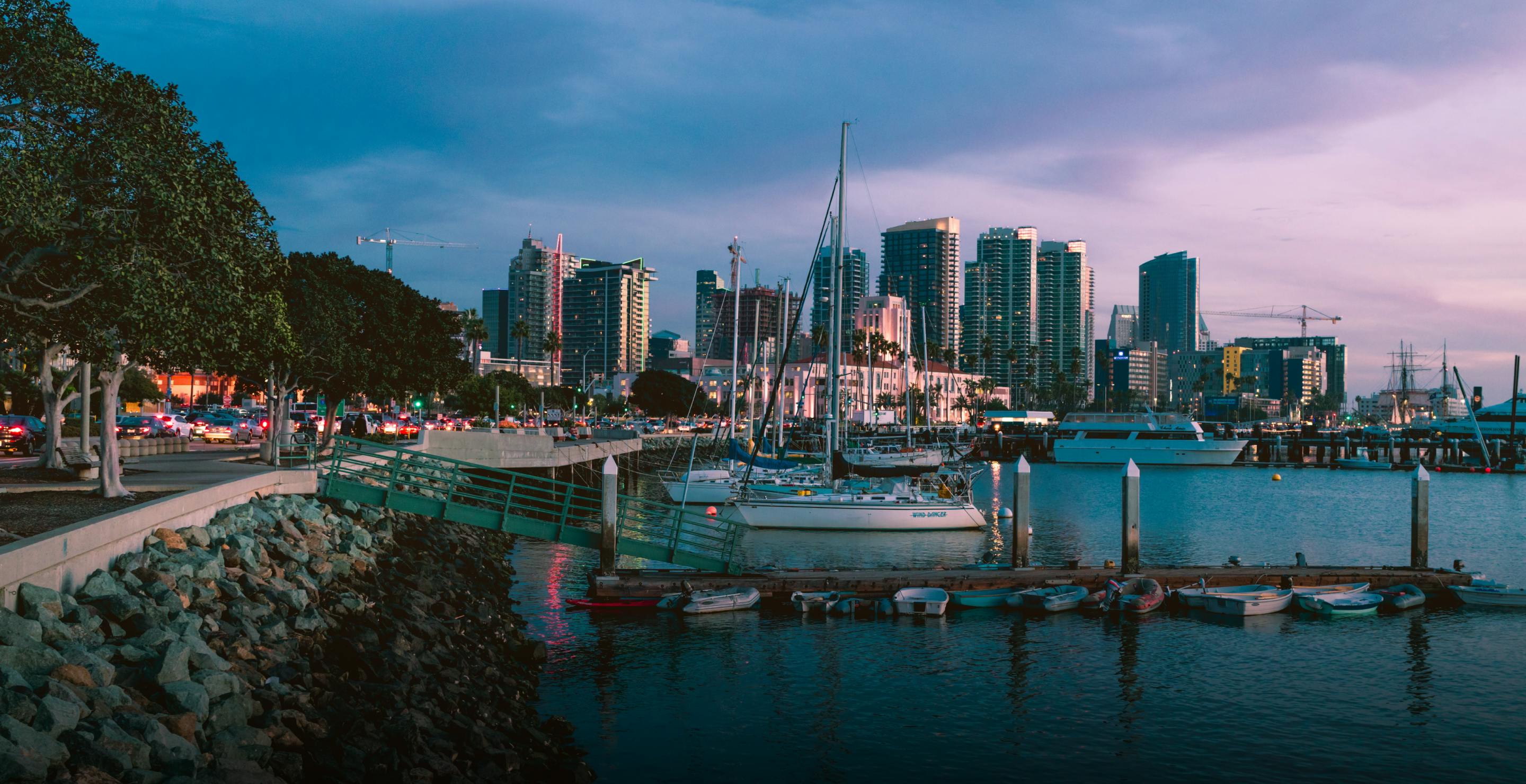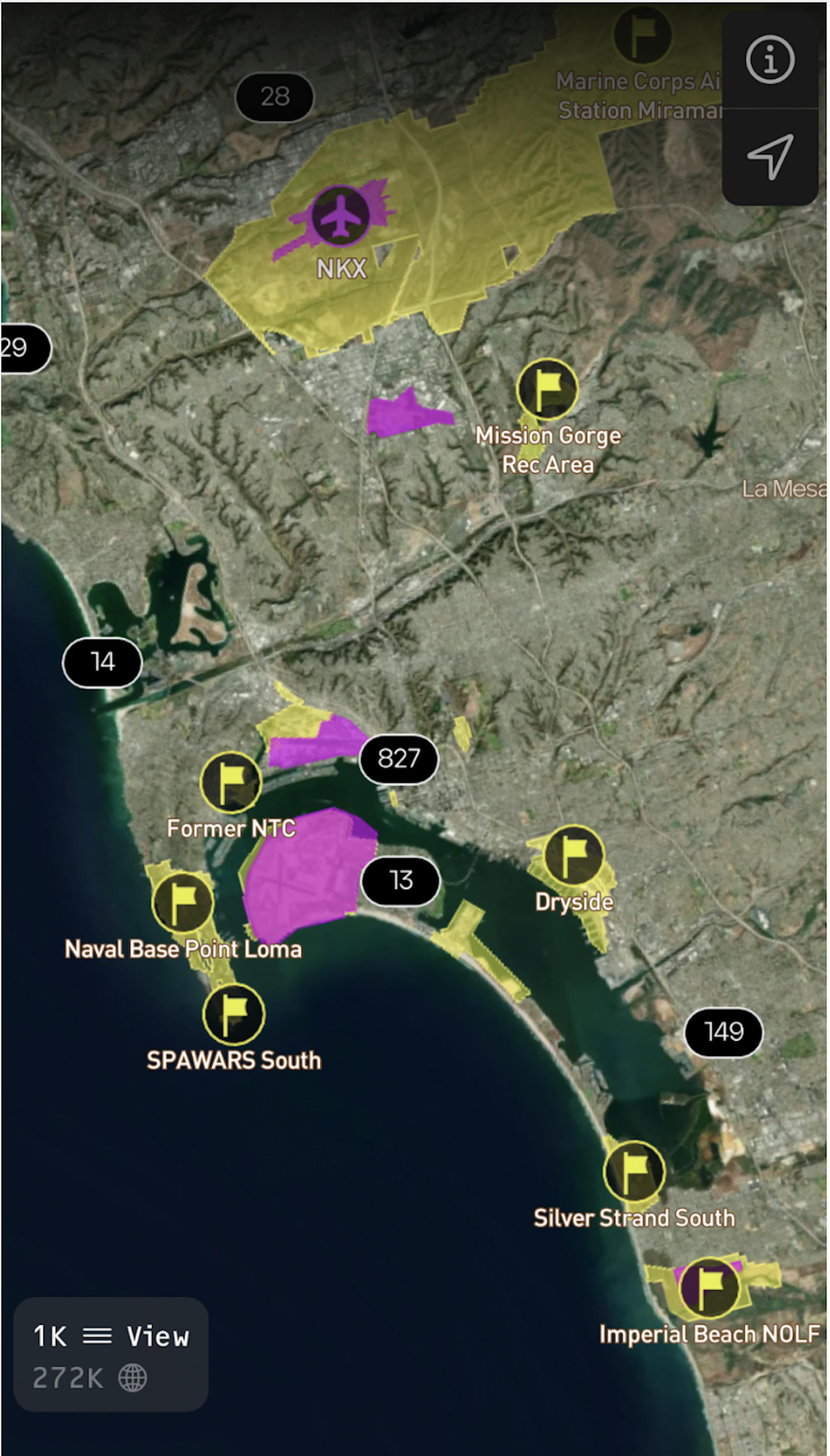

Enigma’s Research Trip to San Diego
At Enigma, our team has interesting discussions. One topic that has come up a few times is whether there is a correlation between UAP sightings and coastal areas. Our conversations with pilots and scientists anecdotally support that thesis. It also makes sense from a first principles perspective, given that population density is higher near bodies of water.
Until better quality sightings data is collected, it will be challenging to definitively answer this question. Nevertheless, we wanted to see what we could learn from on the ground research. In August, several of our team members went on a trip to the eastern tip of New York, where they spoke to local fishers. To explore this thesis further and listen to observers, we decided to head to the West Coast to see what we could learn in the San Diego area.
We queried our historical database to see what the sightings rate has been in the area for the last ten years. We continue to clean the data on a regular basis, removing extraneous reports and non-UAP identified objects, so these queries remain preliminary. Our query did not show a higher sightings rate than other geographies over the past ten years. But we picked the San Diego area because of a few interesting recent stories we have heard, as well as the fact that a UAP was seen there in 2004 by the USS Nimitz crew.

Screenshot of the San Diego Bay area from the Enigma app.
We also wanted to explore some questions. Do recent unidentified sightings in that geography relate to how busy the area is? San Diego Seaport sees two million tons of cargo transit each year. There are seven military and naval bases with 100,000 military members around the city. Perhaps this level of activity explains why people mistakenly think they see UAP. Or perhaps the UAP are interested in the port and the naval bases. Or perhaps a strong military presence lends itself to more trained observers and sensors in the area to detect UAP. We wanted to hit the ground to hear from people in the area and explore these questions.
In mid-January, we set up shop in Seaport Village on the Embarcadero, just west of San Diego's Gaslamp Quarter. Over the course of three days, we interacted with about 500 locals. They came from all different interests and professions, including security guards, moms with strollers, firemen, law enforcement officials, families, and local shop owners. We popped up our Enigma banners that read, "Share your UFO Sighting," and encouraged people to stop and chat.
A few passersby seemed reluctant to engage when they saw the word UFO on the sign, suggesting that the taboo is still real. Others, once they realized we were just interested in talking about any objects seen in the sky that are not immediately identifiable, were interested in stopping and talking. We had conversations with about 75 people. Several folks shared interesting stories (more here.) One pilot, when we asked if he’d seen a UAP, responded with a surprising quip, "I'm a pilot. Of course, I have!"
Most people have at some point seen something that they couldn’t immediately recognize in the sky. This is normal and expected. What we didn’t expect were these common patterns around people’s behavior in response to a sighting:
- It might be surprising, but almost all of the people who told us they saw something unusual in the sky, instinctively took out their phone to record it.
- However, of all the people who showed us the footage they had recorded, none of them thought to report it online or share it on social media.
- Many of the sighters shared their videos over private text with friends and family. There is a much larger amount of unidentified object footage already sitting on people’s smartphones than we realized.
- While some people feel embarrassed sharing their videos in public, every single person is curious about what they saw and wants answers. What did I see? Is it identifiable or not? Have other people seen something similar?
We set out with questions around the correlation and causation of UAP sightings and coast lines. It’s just the beginning when it comes to cracking those larger data questions. What we came back with was a lot of learnings about people’s behavior – how they respond to unidentified objects, record them, how they do and do not socialize them.
Most people did not know that reporting an anomalous sighting online can be a quick and frictionless action. On the Enigma sighting submission page, users can choose to report anonymously. If the sighting is accepted by our team, it is published on a searchable map. The map is currently available in our invite-only beta app, and will be available to the broader public in the next few months. Our app enables users to search for other sightings in the same area, and get input from others about what they may have seen.
There is still work to be done to reduce the stigma around unidentified object sightings. But it is clear the topic has normalized and crossed into mainstream conversation. People are already comfortable recording unusual things. Increasingly, they feel comfortable sharing these things online as well.
Thank you San Diegans for sharing your time and thoughts with us!